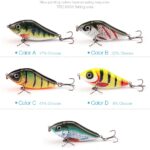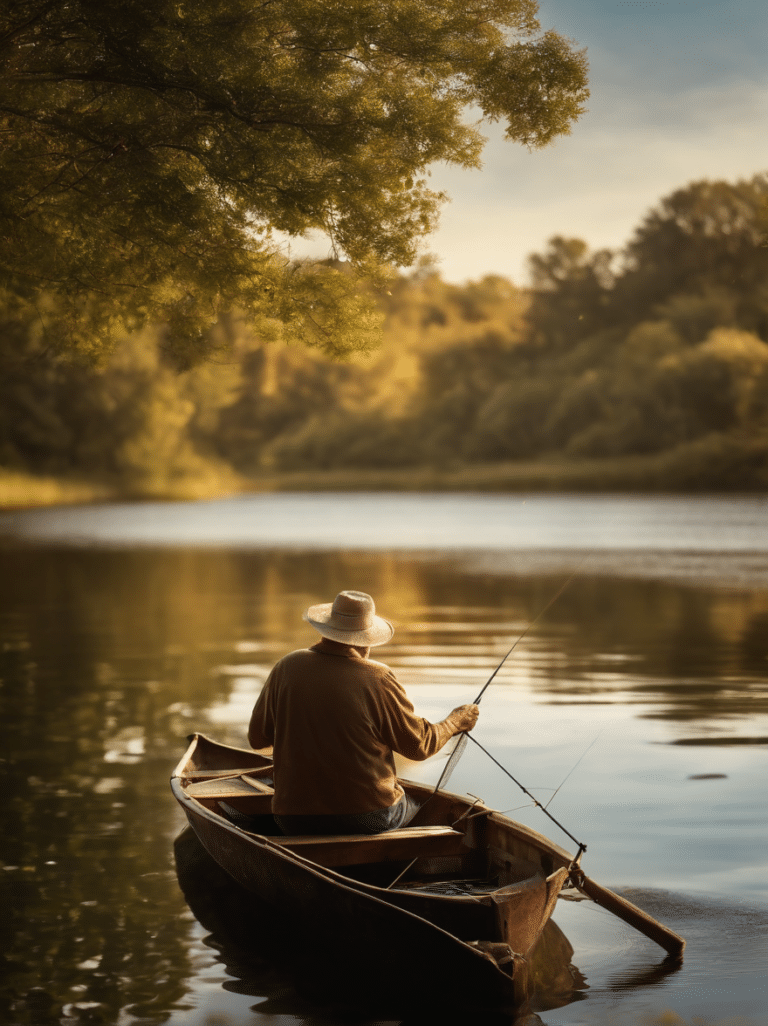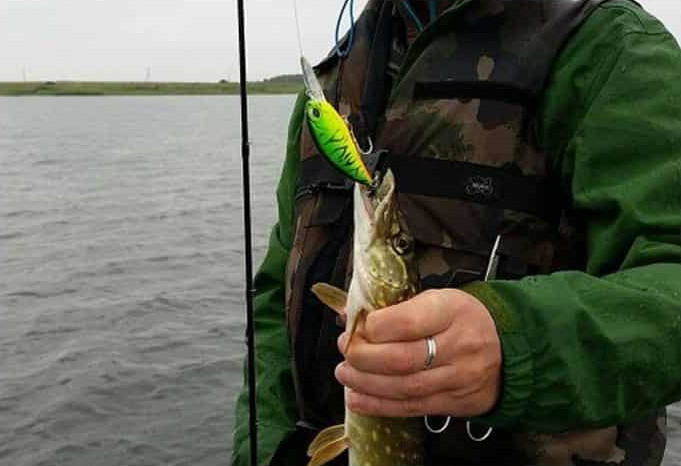Tempting Bass with Lipless Crankbaits: A Sound and Vibration Guide
Tempting Bass with Lipless Crankbaits
Introduction
Bass fishing is a beloved sport enjoyed by millions of anglers around the world. Anglers use various techniques and lures to catch these elusive freshwater fish, and one such technique that has gained immense popularity in recent years is the use of lipless crankbaits. Lipless crankbaits are lures that mimic the movements of baitfish, making them a tempting target for bass.
These lures are characterized by their lack of a lip, resulting in a tight wobbling action when retrieved through the water column. The varying sizes, shapes, and colours available in the market make lipless crankbaits versatile fishing tools that can be used in different fishing scenarios.
Understanding how to tempt bass with lipless crankbaits is crucial for anglers looking to enhance their chances of success on the water. While these lures are considered effective throughout the year, they can be particularly useful during transitional periods when bass are moving from deep to shallow water or vice versa.
Brief Overview of Bass Fishing
Bass fishing has been a favourite pastime for many decades across North America and other parts of the world. The two most common species targeted by anglers are largemouth bass and smallmouth bass, each presenting unique challenges for fishermen.
Largemouth bass thrive in shallow waters with heavy cover such as weeds or fallen trees while smallmouth bass prefer colder waters with rocky bottoms near shorelines or drop-offs. Regardless of species or location, successful bass fishing requires understanding their behaviour patterns based on feeding habits, spawning periods, and seasonal movements.
The Use of Lipless Crankbaits
Lipless crankbaits have become increasingly popular among anglers due to their versatility and effectiveness in attracting fish throughout the year. These lures can be fished at various depths and retrieved at different speeds, making them useful in a wide range of fishing scenarios. Lipless crankbaits come in a variety of sizes, shapes, and colours.
Some models are designed to mimic specific types of baitfish while others have unique patterns or finishes to attract fish based on the water conditions. The lack of a lip on these lures results in a tight wobbling action that creates sound and vibration, which can help trigger strikes from nearby fish.
Importance of Understanding How to Tempt Bass with Lipless Crankbaits
While lipless crankbaits are considered effective in catching bass throughout the year, understanding how to use them properly is crucial for success. Factors such as weather conditions, water temperature, and location all play a role in determining the best approach when using lipless crankbaits.
By understanding the different techniques for tempting bass with lipless crankbaits and identifying ideal fishing spots based on seasonal movements and feeding habits, anglers can greatly enhance their chances of landing a trophy fish. In the following sections, we will discuss these techniques in more detail.
Understanding Lipless Crankbaits
Definition and Characteristics of Lipless Crankbaits
Lipless crankbaits are a type of fishing lure that is designed to mimic the movement and appearance of baitfish. They are characterized by their lack of a diving lip, which sets them apart from other types of crankbaits. Instead, they rely on their shape and weight to create a unique, wobbling action that attracts fish.
The body of a lipless crankbait is typically elongated and streamlined, with a prominent flat spot on each side that helps create its distinctive swimming motion. They usually come equipped with one or more treble hooks attached to the belly or tail end to increase the chances of hooking onto a fish.
Different Types of Lipless Crankbaits Available in the Market
There are several different types of lipless crankbaits available in the market today. Some common variations include sinking, floating, and suspending lures, each with its unique characteristics and uses.
Sinking lipless crankbaits are designed to sink quickly when cast into deeper water. This can be useful for catching fish that dwell at different depths or for targeting schools of fish near the bottom.
Floating lipless crankbaits float on top of the water when retrieved slowly or paused during retrieval. They can be effective in shallow waters where bass feed on surface prey such as insects or small minnows.
Suspending lipless crankbaits are neutrally buoyant lures that suspend in water without floating or sinking. This allows them to hover in front of fish longer than other types while maintaining an enticing action.
Advantages and Disadvantages of Using Lipless Crankbaits
One major advantage of using lipless crankbaits is their versatility. They can be fished at various depths and are effective in both clear and murky waters.
They are also useful for imitating a wide range of baitfish, making them a go-to lure for catching bass. However, one disadvantage to using lipless crankbaits is that they are prone to get snagged on underwater vegetation or structure due to their lack of a diving lip.
Additionally, they can be difficult to control in strong currents or windy conditions, which can affect their ability to attract fish. Overall, the benefits of using lipless crankbaits outweigh the disadvantages when used properly.
Identifying Ideal Fishing Spots for Bass
Factors to consider when selecting a fishing spot
When it comes to bass fishing, selecting the right fishing spot is crucial. Factors that should be considered when selecting a fishing spot include water temperature, weather conditions, time of day, time of year, and available cover and structure. Bass prefers water temperatures between 65°F and 75°F, so it is important to choose fishing spots where the water temperature falls within this range.
Weather conditions can also play a role in where bass are found; for example, they may move into shallow waters during overcast or rainy days. Another key consideration when selecting a bass fishing spot is the time of day.
Bass tends to be most active during the early morning and late afternoon hours, so these times may be ideal for fishing. The time of year is also important; during spring months, the bass moves into shallow waters to spawn while in colder months they move toward deeper waters.
Available cover and structure should be taken into account when choosing a fishing spot as it provides hiding places for bass and baitfish alike. Examples of ideal structures include submerged trees or logs, weed beds or grassy areas along shorelines.
Types of water bodies that are ideal for bass fishing
Bass can be found in various types of water bodies including lakes (natural and man-made), rivers, streams or ponds with varying depths and structures. Natural lakes tend to have more diversity in terms of habitat which can produce better results than man-made lakes with fewer natural structures present.
Man-made reservoirs offer good locations for catching large numbers of fish but may lack diverse habitats unless designed specifically to create such habitats. Rivers provide ample opportunities for catching smallmouth bass as they often prefer cooler temperatures than their largemouth counterparts who prefer warmer waters that encourage plant growth along shorelines.
Ponds are a great choice for beginners since they tend to be smaller and offer fewer areas for fish to hide than larger bodies of water. However, catching larger fish in ponds can often prove difficult due to their limited space.
Techniques for identifying areas where bass are likely to be found
There are several techniques one can use to identify areas where bass are likely to be found. One technique is the use of electronics, such as sonar or fish finders which can detect underwater structures.
Another technique involves observing the surface of the water for any signs of activity such as splashing or movement. A third technique is the use of lures that mimic the natural prey of bass such as crawfish or shad.
These lures act as bait which in turn attracts bass towards them. Additionally, looking for specific cover and structures such as weed beds or submerged trees can also help identify potential spots.
Another tried-and-true technique is simply asking local fishing experts or other experienced anglers who are familiar with the area, who may have tips on where to find active fish during certain times of the year and weather conditions. Ultimately, a combination of these techniques will enable you to identify ideal fishing spots that result in successful catches when using lipless crankbaits.
The Right colour and Size of the Bait
Choosing the right colour and size of a lipless crankbait is vital in enticing bass to strike. Different colours work best in different water conditions, with some colours being more effective than others. When fishing in clear water, use natural shades like silver or gold, while brighter colours work better in murky waters.
For example, chartreuse or firetiger is ideal for stained or muddy water conditions. Additionally, the size of the bait should match what the bass are feeding on in that particular body of water.
If you are fishing for smaller baitfish species like shad or minnows, use a small-sized lipless crankbait that matches their size and colouration. On the other hand, if you are targeting larger prey such as crawfish or bigger fish species like bass themselves, choose a larger-sized bait accordingly.
Retrieval Techniques That Work Best
There are several retrieval techniques when using lipless crankbaits that can help entice and tempt bass to bite. The steady retrieve is one of the most common methods used by anglers where they cast out their lure and retrieve it steadily back to them at a comfortable speed without any jerks or pauses. The yo-yo retrieve involves lifting your rod tip upwards and then lowering it back down quickly so that your lure bounces off the bottom before reeling it back up again.
This technique can mimic fleeing baitfish trying to escape from predators which can be irresistible for hungry bass. The stop-and-go retrieve means retrieving your lure then pausing every few seconds allowing it to sink towards the bottom then continuing with retrieval again before another pause; this creates an erratic movement similar to wounded baitfish which can trigger predatory instincts in fish.
Using Sound and Vibration to Attract Fish
One advantage of using lipless crankbaits is their ability to create sound and vibration in the water, which can be used to attract fish. Different lures produce different sounds, with some containing internal rattles or vibrating blades that emit noise which can entice nearby fish.
When fishing in murky or stained waters, use lipless crankbaits with a more significant amount of rattles or blades to create as much noise as possible. Conversely, when fishing in clear waters, use a lure with fewer rattles or fewer vibrating blades to avoid spooking fish and making them less likely to strike.
Selecting the right colour and size of lipless crankbait is crucial in tempting bass to bite. Retrieval techniques like steady retrieve, yo-yo retrieves and stop-and-go retrieve can also be effective methods for enticing fish.
It’s important to consider using sound and vibration when fishing with lipless crankbaits as they can help attract fish towards your lure. By keeping these techniques in mind, you’ll increase your chances of catching more bass on your next fishing trip.
Common Mistakes When Using Lipless Crankbaits
Overworking the bait or retrieving it too fast
One of the most common mistakes anglers make when using lipless crankbaits is overworking the bait or retrieving it too fast. Lipless crankbaits are designed to create a lot of vibration and noise to attract fish, but many anglers make the mistake of reeling in their bait too quickly.
This can cause the bait to skim across the surface of the water, often resulting in missed strikes from fish that are attracted to the sound but unable to catch up with the quickly-moving lure. To avoid this mistake, try slowing down your retrieve and allowing the bait to sink deeper into the water column.
Experiment with different retrieval speeds until you find a pace that works best for attracting fish in your specific fishing spot. Remember that oftentimes, less is more when it comes to using lipless crankbaits – a slower retrieve can create more movement and vibrations than a faster one.
Using inappropriate gear or line weight
Another common mistake when fishing with lipless crankbaits is using inappropriate gear or line weight. These baits require specific types of equipment for optimal performance, especially if you plan on fishing in deeper waters where heavier lures are needed. Using gear that is too light or a line weight that is not appropriate for your setup can cause you to miss out on potential bites.
When selecting equipment for lipless crankbait fishing, look for rods that have medium-heavy power and fast action – these will provide enough strength and sensitivity to feel bites while also allowing for accurate casts and good hooksets. For line weight, choose something heavy enough to handle larger fish but not so heavy that it affects your ability to feel subtle bites or detect changes in bottom structure.
Not paying attention to weather conditions or water temperature
One of the biggest mistakes anglers make when fishing with lipless crankbaits is not paying attention to weather conditions or water temperature. These factors can greatly impact how fish behave and where they are likely to be found, making it important for anglers to adjust their tactics accordingly. For example, during cooler months when water temperatures are lower, fish tend to move slowly and become less active.
In these conditions, using a slower retrieve and fishing in deeper waters may be more effective than using a faster retrieve near the surface. Similarly, weather conditions such as wind can affect how fish move through the water – on windy days, try casting your bait upwind and allowing it to drift naturally towards you for a more realistic presentation.
Avoiding these common mistakes when using lipless crankbaits can greatly increase your chances of success on the water. By taking the time to choose appropriate gear, adjusting your retrieval speed and paying attention to weather conditions and temperature changes, you’ll be able to effectively tempt bass with these versatile lures in any fishing environment.
Conclusion
The Power of Lipless Crankbaits
Lipless crankbaits are an excellent tool for bass fishermen because they provide a lot of versatility and can be used in a variety of settings. They are also a great option for beginners looking to get into bass fishing due to their ease of use. With the right techniques, you can effectively target and catch fish with lipless crankbaits.
Experience is Key
As with any form of fishing, the key to success is practice and experience. Experiment with different colours, sizes, and retrieval techniques until you find what works best for you in your specific location. Don’t be afraid to try new things and be willing to learn from your mistakes.
The Joy of Fishing
Fishing is not just about catching fish; it’s also about enjoying the great outdoors, spending time with friends and family, and taking a break from the stresses of everyday life. Whether you are on a boat or fishing from shore, take some time to appreciate your surroundings and enjoy the experience.
Lipless crankbaits are an effective tool for enticing bass in a variety of settings. Understanding how these baits work and how to use them properly is crucial for success on the water.
Remember that fishing is not just about catching fish but also about enjoying nature and having fun. So grab your gear, head out on the water, and remember that every day on the lake is a good day!







Leave a comment